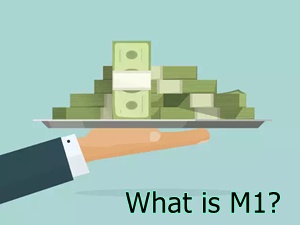
Table of Contents
M1
What is M1?
M1 refers to the money supply that constitutes Negotiable Order of Withdrawal (NOW) accounts, travellers’ cheques, demand deposits, physical currency and coins and other deposits.

M1 comprises the most liquid parts of the money supply as it has assets and currency that are or could be immediately converted into cash.
Explaining M1
M1 money is a country’s basic money supply that's used as a medium of exchange. It includes demand deposits and checking accounts, which are the most commonly used exchange mediums through the use of debit cards and ATMs.
Of all the components of the money supply, M1 is defined the most narrowly. It does not include Financial Assets, such as savings accounts and Bonds. M1 money is the money supply metric most frequently utilized by economists to reference how much money is in circulation in a country.
Calculating M1
Paper Money is the most substantial part of the money supply of a country. The M1 money supply is constituting Federal Reserve notes. If not, it is only known as paper money or bills – and coins that are circulated outside the Depository institutions’ vaults and the Federal Reserve Banks.
Talk to our investment specialist
Along with that, the M1 also has travellers’ cheques, the ones that have been issued by non-Bank, demand deposits, and other Checkable Deposits (OCDs) along with NOW accounts that are at the credit union share draft accounts and depository institutions.
For most of the central banks, M1 possibly often includes money that is in circulation along with readily cashable instruments. However, there could be a few variations in terms of the definition of M1 around the world.
For instance, in the eurozone, M1 comprises overnight deposits. And then, in Australia, it has current deposits from the private sector that is non-banking. As far as the United Kingdom is concerned, it doesn’t have M0 or M1 class of money supply anymore, since M4 is its primary measure.
Talking about India, the Reserve Bank of India gets to regulate the circulation of money. Here, M1 comprises such currency that is with the public plus deposit money, such as demand deposits with the bank system and other deposits with RBI. In August 2017, M1 stood at 184% of M0.
All efforts have been made to ensure the information provided here is accurate. However, no guarantees are made regarding correctness of data. Please verify with scheme information document before making any investment.




